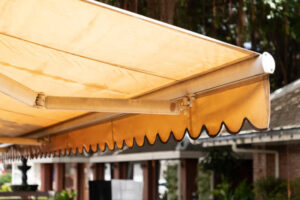Introduction:
Pickleball and tennis, two beloved racquet sports, have been capturing the hearts of athletes and enthusiasts around the world. While both share similarities, including the use of a net, a racquet, and a ball, the courts on which these sports are played differ significantly. In this article, we will explore the distinctions between Pickleball Courts vs. Tennis Courts. Highlighting the variations in dimensions, surface materials, and gameplay. By the end, you’ll have a clear understanding of why these distinctions matter and how they impact the unique experiences offered by each sport.
Pickleball Courts: The Basics:
Pickleball courts are designed to accommodate the sport’s distinctive characteristics. They are typically smaller than tennis courts, measuring 20 feet in width and 44 feet in length. In contrast to the vast expanse of a tennis court, a pickleball court’s dimensions are tailored to the sport’s fast-paced, close-quarters nature.
Pickleball courts are divided into halves by a net that is 34 inches in height at the center. The net serves as both a physical barrier and a strategic element, as it dictates the rules of play. The kitchen, a non-volley zone, extends 7 feet from the net on both sides, adding an extra layer of complexity to the game. The surface of a pickleball court is typically made of asphalt or concrete. Ensuring a consistent bounce and a reliable playing experience.
Tennis Courts: The Essentials:
Tennis courts, on the other hand, are considerably larger than pickleball courts. They measure 78 feet in length and 27 feet in width for singles matches and 36 feet in width for doubles matches. The dimensions of a tennis court cater to the sport’s emphasis on long rallies and powerful groundstrokes.
Tennis courts are divided by a net that stands at 3 feet in height at the center. Which allows for the high-arching shots and baseline rallies that are characteristic of tennis gameplay. The surface material of tennis courts varies and can be made of clay, grass. Or hard court materials like asphalt or concrete, depending on location and player preference. Each surface type influences the speed and bounce of the ball, adding an additional layer of complexity to the sport.
Differences in Gameplay:
The variations in court dimensions between pickleball and tennis have profound implications for gameplay. Pickleball’s smaller court size and lower net height encourage fast, reflex-based rallies with less running involved. The kitchen (non-volley zone) at the net adds a tactical dimension to the game, as players must strategically position themselves to avoid stepping into this zone while still maintaining control of the point.
In tennis, the larger court size allows for more extended rallies and emphasizes athleticism, endurance, and power. Players cover greater distances during points, relying on agility and speed to reach the ball. The higher net height in tennis necessitates precision in shot placement, including top-spin forehands, sliced backhands, and well-placed serves.
The choice of surface material also significantly influences the style of play. Grass courts are known for their speed, encouraging serve-and-volley tactics, while clay courts slow down the game and favor baseline rallies. Hard courts offer a balanced playing experience with moderate speed and bounce.
Conclusion:
While Pickleball Courts vs. Tennis Courts share common roots and are both played with a racquet and a ball, their respective court dimensions, surface materials, and gameplay styles set them apart as distinct sports. Pickleball courts are smaller, with a lower net, facilitating fast-paced, close-quarter rallies that emphasize agility and reflexes. Tennis courts, on the other hand, are larger, with a higher net, promoting longer rallies and requiring athleticism and endurance.
Ultimately, the choice between pickleball and tennis depends on individual preferences, physical abilities, and desired playing experiences. Whether you’re drawn to the strategy and agility of pickleball or the endurance and power of tennis, both sports offer unique and rewarding challenges that continue to captivate players of all ages and skill levels. So, whether you’re smashing a pickleball across the net or acing your opponent on the tennis court, the joy of racquet sports awaits.






